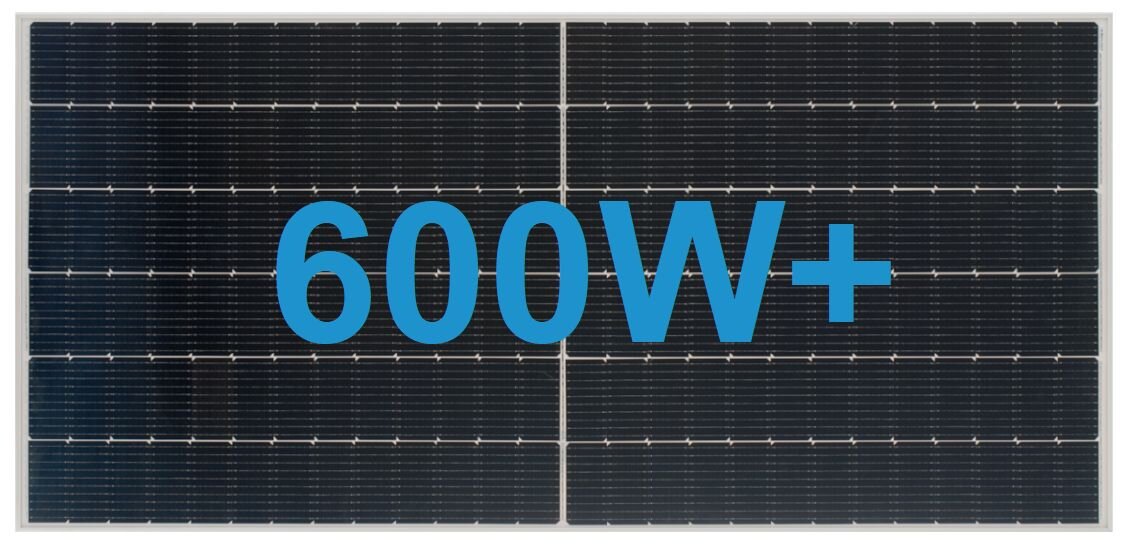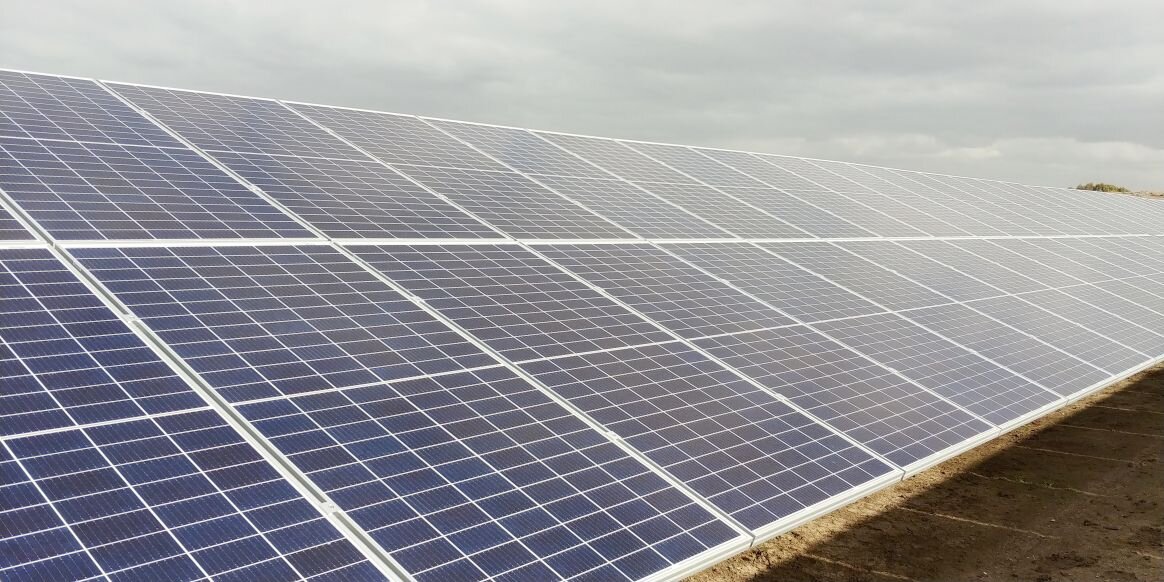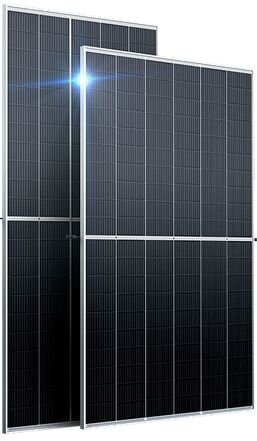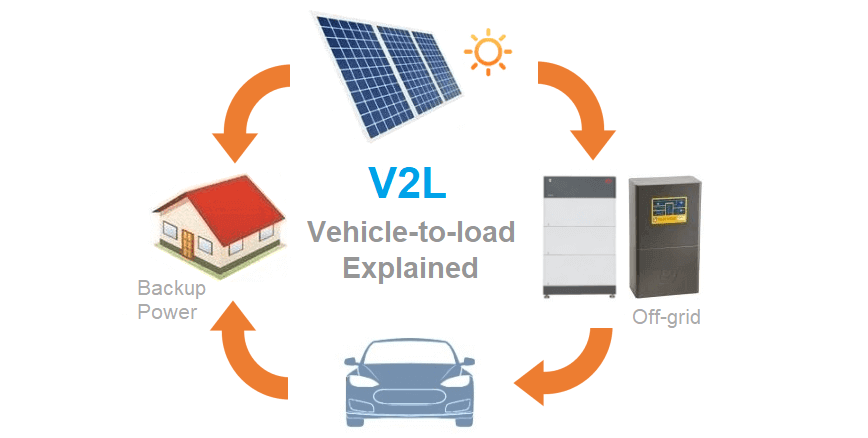Solarpanã¢â€žâ¢ã¯â¸â - 8w Portable Solar Panel Charger Review
Blog
Reviews and data on the all-time Solar panels, inverters and batteries from SMA, Fronius, SunPower, SolaX, Q Cells, Trina, Jinko, Selectronic, Tesla Powerwall, ABB. Plus hybrid inverters, bombardment sizing, Lithium-ion and lead-acid batteries, off-grid and on-grid power systems.
Most powerful solar panels 2022

In the solar earth, panel efficiency has traditionally been the cistron most manufacturers strived to atomic number 82. However, more recently, a new boxing emerged to develop the world'due south well-nigh powerful solar panel, with many of the industry's biggest players announcing larger format next-generation panels with power ratings well above 500W. The race for the most powerful panel started in 2020 when Trina Solar revealed the first panel rated at 600W. Non long after, at the SNEC PV Ability Expo in China, JinkoSolar unveiled a 610W version of the Tiger Pro panel. At the same time, Trina Solar announced an even more powerful 660W+ console was in evolution. Amazingly, close to 20 manufacturers at SNEC 2020 showcased panels rated over 600W, with the most powerful being the Jumbo 800W module from JA solar. Yet, this panel was enormous at ii.2m high and 1.75m wide.
Despite the publicity around the many high-powered panels, much of the PV jail cell technologies enabling these higher power ratings are universal. Traditional commercial and residential panels take besides increased in size and power, with 400W to 500W panels now standard. The considerable increase in ability is primarily due to increases in efficiency due to many innovations, which we depict later in the article.
Designed for utility-scale systems
The principal driver for developing larger, more powerful solar panels stems from the want to subtract the price of utility-scale solar farms and ultimately reduce electricity prices. Since larger panels require an equivalent corporeality of connections and labour compared to smaller panels, the installation cost per kW is reduced, resulting in lower overall cost and decreased LCOE. As explained below, the new high powered panels are physically much larger compared to common panels constitute on residential rooftops. Although, those hoping to go a dozen 600W panels on your abode rooftop to get an easy 7kW will be a petty disappointed. At this stage, nigh high powered panels volition only be bachelor for commercial and utility-scale systems, plus the actress-large size is not well suited and challenging to handle on nigh residential rooftops.

While the solar industry equally a whole is slowly shifting to larger, higher wattage panels, the forepart runners in the race are Trina Solar, Jinko Solar, Canadian Solar, Risen Energy and JA Solar. These well-known companies all launched ultra high-power panels with ratings above 600W over the final year. Interestingly, premium module manufacturers SunPower (at present Maxeon) and REC are not racing to develop larger format loftier-power panels. Instead, they are focusing on supplying their traditional residential and commercial client base of operations with high-efficiency panels. That being said, Sunpower has revealed a larger 540W panel in the next-generation 'Performance 5' series.
Most Powerful Solar Panels *

* List of the nearly powerful panels currently in production or soon to be released with a maximum panel size of 2.4m high x 1.4m wide. Availability and release dates may vary for unlike regions.
| Make | Model | Power | Cell size | Jail cell type | Efficiency % | Avail |
|---|---|---|---|---|---|---|
| Risen Energy | NewT@Northward | 700 Due west | 210mm | N-Type HC TOPCon | 22.5 % | Q1 2022 |
| Trina Solar | Vertex | 670 W | 210mm | P-Type 1/three-cut Mono-PERC MBB | 21.6 % | Q2 2021 |
| Astronergy | Astro 6 | 670 W | 210mm | P-Type HC Mono PERC+ | 21.6 % | Q1 2022** |
| AE Solar | Aurora | 665 Due west | 210mm | P-Blazon HC Mono PERC | 21.four % | Q2 2022 |
| Canadian Solar | HiKu7 | 665 W | 210mm | P-Type HC Mono PERC | 21.iv % | Q3 2021 |
| Jinko Solar | Tiger Pro NEO | 620 West | 182mm | Due north-Type HC TOPCon | 22.3 % | Q3 2021 |
| SunTech | Ultra V serial | 620 W | 182mm | N-Type HC TOPCon | 21.3 % | Q1 2022** |
| Q CELLS | Q.PEAK DUO XL-G11.2 | 590 W | 182mm | P-Blazon HC Mono PERC | 21.5 % | Q2 2022 |
| Jolywood | Niwa Super | 570 Westward | 182mm | Due north-Blazon HC TOPCon | 22.0 % | Q4 2020 |
| Phono Solar | Draco PS560-M7G | 560 West | 182mm | N-Type HC TOPCon | 21.7 % | Q2 2022 |
| JA Solar | DeepBlue 3.0 | 550 W | 180mm | P-Type HC Mono PERC | 21.three % | Q4 2020 |
| Longi | Hullo-Mo 5m | 550 West | 182mm | P-Type HC Mono PERC | 21.5 % | Q3 2021 |
| Maxeon | Performance 5 series | 545 Due west | 182mm | P-Type Shingled Mono PERC | 21.ane % | Q3 2020 |
** Official release engagement yet to exist determined - Loftier book production estimated to begin early to mid-2022. HC = One-half-cut cells. Maximum console size = 2.4m loftier x 1.3m wide.
Larger panel sizes
In the past, most increases in console power came from efficiency gains due to advances in solar cell technology. While that is partly a driver behind the massive bound in panel wattage, the primary factor is the new larger cell sizes existence adult together with a college number of cells per console. These new prison cell formats and configurations mean the new panels are physically much larger in size. By and large, these large panels are best suited for utility-scale solar farms or big commercial installations.
Traditionally, solar panels were available in ii primary sizes - the standard format lx cell panels (roughly 1.65m loftier x 1m broad) used for residential rooftops, and the larger format 72 cell commercial size panels (roughly 2m loftier x 1m wide). So half-cut cell panels emerged in roughly the same size simply with double the amount of half-size cells at 120 cells and 144 cells. Besides the standard sizes, there were a few premium manufactures such as SunPower and Panasonic producing unique 96 and 104 cell panels.
The industry-standard panel size for much of the last decade was built around the 156mm x 156mm or half dozen-inch square jail cell format. However, the new panel sizes emerging which are upwards to ii.4m long and 1.3m broad are built around the larger 180 and 210mm wafer sizes. This is a size increase of 20% to 30% compared to the traditional 2.0m x one.0m 72-cell panels which naturally corresponds to the huge boost in power per panel.
Larger prison cell sizes
To subtract manufacturing costs and proceeds efficiency, manufacturers moved away from the standard 156mm (half-dozen") square cell wafer size in favour of larger wafer sizes. While at that place are a variety of cell sizes under evolution, a few jail cell sizes have emerged equally the new industry standard; these include 166mm, 182mm and 210mm. Many of the leading manufacturers including Jinko, Longi and Canadian Solar take aligned with the 182mm format, Trina Solar is pushing the larger 210mm wafer size, while Longi, the globe's largest mono silicon wafer industry, is using both the 166mm and 182mm sizes depending on the awarding.
To remain competitive, many of the smaller volume articles may demand to marshal with i of the new wafer sizes to utilise common wafer and equipment suppliers. For a consummate history and insight into wafer and PV cell sizing standards, this detailed commodity from PV Tech examines the various wafer and ingot sizes, technology changes, and manufacturing trends effectually current and futurity PV cells.
Along with the different cell sizes, at that place is a myriad of new panels configurations congenital effectually the many cell combinations. The three most pop which have emerged are 66-cell (one-half-cut 132), 78-cell (half-cut 156), and 84-cell (one-half-cut 168) panels. The extra-large 210mm cells are also well suited to unique cell dividing formats such equally ane/iii cut cells; where the square wafer is divided into three segments rather than the common half-cutting or half-size cell.
Loftier efficiency cells
To achieve these impressive power ratings the panels and cells have not just increased in size merely cell efficiency has improved substantially using numerous new technologies (listed below) forth with avant-garde rear side passivation techniques like TOPCon.
-
MBB - Multi-busbars
-
PERC/PERC+ - Passivated emitter & rear cell
-
TOPCon - Tunnel-Oxide Passivating Contact
-
N-type silicon cells
-
High-density cells - Reducing inter-cell gaps
Many manufacturers are exploring unlike ways to increment ability and heave jail cell efficiency by spending large on enquiry and development. The use of Due north-type silicon is one of the simplest ways to boost efficiency simply likewise one of the more costly methods. However, the price gap between P-type and N-type silicon is reducing as the economies of calibration lower the price of manufacturing the high-performance North-blazon silicon wafers.
Chart of the maximum solar panel power trend from 2009 to 2021 - Image credit Trina Solar
MBB - Multi-busbars
Of the many cell improvements, the nearly common engineering used to increase efficiency has been multi-busbars (MBB). Traditional ribbon busbars (5BB or 6BB) are existence quickly phased out in favour of nine or more sparse wire busbars (9BB). Some manufacturers such as REC have even moved to sixteen micro-wire busbars in the new Blastoff panel series. Wider cells also hateful more busbars can fit across the cell surface with x or 12 busbars cells likewise condign more than common.

Bifacial panels featuring MBB are also growing in popularity due to the increased ability output by utilising the rear side of the console to reach up to 20% or more power (roughly 80W extra). However, bifacial panels are generally merely benign over light coloured surfaces such as low-cal sandy or rocky ground used in large MW scale solar farms located in more than arid areas.
High-density Cells

Trina Solar Vertex panels feature 210mm 1/third-cut high-density MBB cells - Prototype credit Trina
To further boost panel efficiency and increase power, manufacturers such as Trina Solar take introduced techniques to eliminate the vertical inter-cell gap between cells. Removing the typical two-3mm vertical gaps and squeezing the cells together results in more panel area beingness bachelor to absorb sunlight and generate power. Manufacturers have developed a number of techniques to minimise or eliminate the gap with the most mutual beingness to simply reduce the cell spacing from around 2.0mm to 0.5mm. The reason for this gap was due to traditional larger ribbon busbars requiring 2.0mm+ to bend and interconnect the front and rear of each prison cell. However, the transition to using much smaller wire busbars enabled the gap to be reduced significantly.
LONGi Solar is another manufacturer that managed to reduce the inter-cell gap down to 0.6mm by using what the company describes as a "smart soldering" method using integrated segmented ribbons. This new engineering science uses a unique triangular busbar design across the front end surface of the prison cell, with a very thin flattened section that bends and runs backside the jail cell to form the interconnection.

TR - Tiling Ribbon engineering
Jinko Solar, currently the world'southward largest panel manufacturer, adult what the company refers to equally Tiling Ribbon or TR cells. Tiling Ribbon prison cell technology is the elimination of the inter-cell gap past slightly overlapping the cells creating more cell surface surface area. This in turn boosts panel efficiency and power output. The tiling ribbon technology as well dramatically reduces the corporeality of solder required through using inter-jail cell compression joining methods rather than soldering. Shingled cell panels, such as those used in the Sunpower Performance serial, uses a similar engineering where overlapping sparse prison cell strips can be configured into larger format loftier-power panels.
Increasing efficiency using Tiling Ribbon cell technology to remove the inter-cell gap - Image credit Jinko
Several other leading manufacturers such equally Q Cells have taken a like arroyo to heave efficiency past completely eliminating the inter-cell gap. However, most manufacturers have taken the more common approach and reduced the inter-prison cell clearance as much as possible leaving a very pocket-sized 0.5mm gap; this effectively removes the gap without having to develop new cell interconnection techniques.
Northward-Type TOPCon silicon cells
Cells built on an Northward-type silicon substrate offer improved operation over the more mutual P-type silicon due to a greater tolerance to impurities which increases overall efficiency. In addition, N-type cells have a lower temperature coefficient compared to both mono and multi P-blazon cells. North-blazon cells besides have a much lower rate of LID or light-induced degradation and practice not generally suffer from LeTID (low-cal and elevated temperature induced deposition) which is a common problem with P-type cells.

TOPCon or Tunnel Oxide Passivated Contact refers to a specialised rear side cell passivation technique that helps reduce the internal recombination losses in the prison cell and boosts cell efficiency. The process has been available for several years but is now condign the new manufacture standard every bit manufacturers strive to increase efficiency and performance.
Source: https://www.cleanenergyreviews.info/blog/most-powerful-solar-panels








